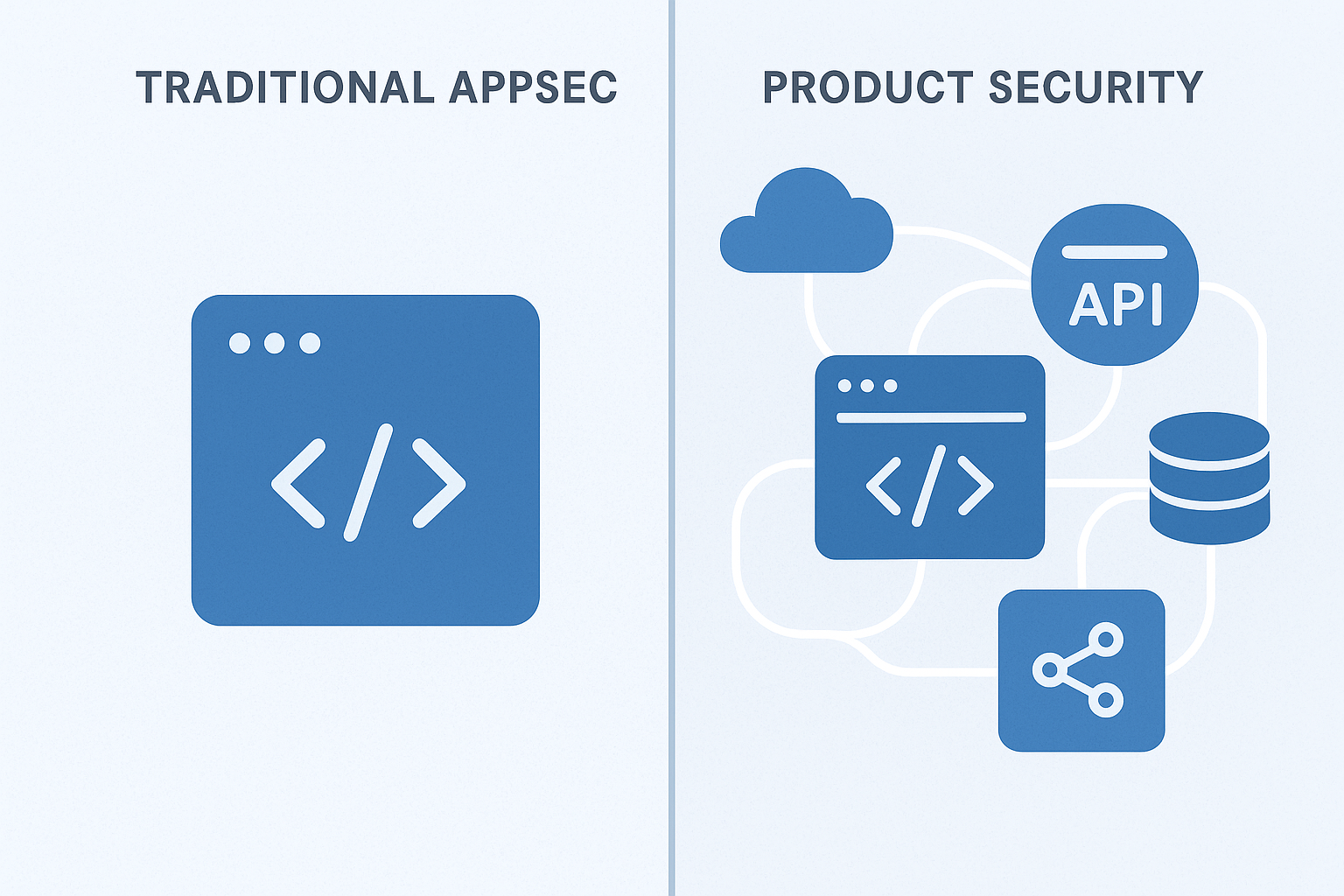· Appaxon Team · insights · 1 min read
How is Product Security different from Application Security?
Application security focuses on safeguarding code bases while Product Security takes a more holistic view of the entire application lifecycle.

Application security typically focuses on safeguarding code bases through scans, ensuring secure-coding best practices, testing for application vulnerabilities (XAST), analyzing open-source composition (SCA), etc. More recently, it is being extended to also sometimes include software bill of materials (SBOMs) and supply chain security (“SSCS”) components. While absolutely critical, that view is limited to what happens within the boundaries of the application development pipelines.
Product Security: A Holistic Approach
Product Security on the other hand, assumes a more holistic view and looks at the entire lifecycle of an application. A “product” isn’t just code; it’s also deployment configurations, data flows, cloud dependencies, product threat models, web of APIs, and third-party usage. The exposure a product faces, in addition to the code vulnerabilities — and the corresponding risk — extends into areas such as:
- Deployment complexity - Multiple environments introduce their own potential exposures
- Risk from third-party SaaS and LLM integrations - External dependencies create new attack vectors
- Compensating security controls - Additional layers of protection beyond code-level security
- Platform Security and Access Controls - Identity management, RBAC, and service-to-service authentication
This broader perspective ensures teams see the complete picture of threat exposure rather than just focusing on individual code vulnerabilities.




